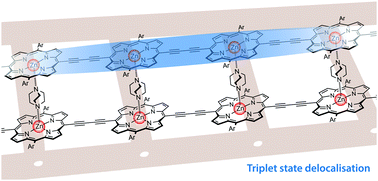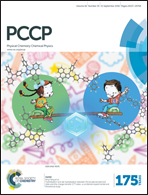Photogenerated triplet states in supramolecular porphyrin ladder assemblies: an EPR study†
Abstract
Introducing bridging ligands such as DABCO to solutions of linear zinc porphyrin oligomers has previously been shown to lead to the formation of ladder-type assemblies in which the single porphyrin units in each strand adopt a predominantly co-planar conformation. Here, we employ transient Electron Paramagnetic Resonance (EPR) to study photogenerated triplet states of these complexes in frozen solution with a particular focus on the extent of spin delocalisation. We make use of two different techniques: (i) the zero-field splitting parameters D and E are determined using transient continuous wave (cw) EPR spectroscopy and (ii) the hyperfine coupling constants, which directly reveal the extent of spin delocalisation, are quantified by orientation-selective proton Electron Nuclear DOuble Resonance (ENDOR) spectroscopy. It is found that ladder formation does not encourage triplet state delocalisation either across the bridging ligand DABCO or along the individual porphyrin strands despite their co-planar conformation, which was previously shown to allow increased electronic delocalisation.



 Please wait while we load your content...
Please wait while we load your content...